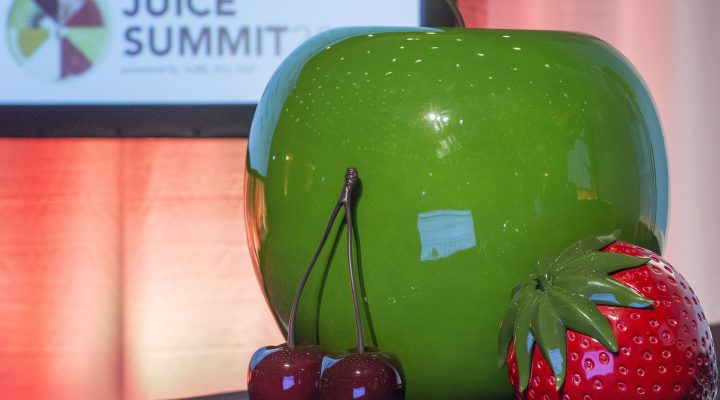Now in its fifth year the Juice Summit brings together delegates and exhibitors from the global juice industry for another stimulating and topical conference on the 4th and 5th October in Antwerp, Belgium
Launched in 2013 with the aim of providing a forum for industry players and their suppliers, the Juice Summit is now a mainstream international conference boasting speakers who are renowned experts and leaders in their various sectors across the European and international juice market. Compared to other industries the Juice Summit is unique in that it is organised by the fruit juice industry for the fruit juice industry.
Since 2013 the conference has been growing in attendee numbers and last year (2016) the Summit attracted 543 participants from 41 countries representing a total of 291 companies. The organisers are confident that the numbers for this year will be considerably more. This year’s event will allow delegates to maximise the networking opportunities on offer at three evening gatherings at prestigious venues in Antwerp.
In a packed programme the AIJN, together with its partners the IFU and SGF, has produced an agenda that will cover a wide variety of issues which will look at the business environment as it is today and what the challenges are for the future. Speakers and panellists at the Summit will also share their vision of the future for the fruit juice industry.
The first morning of the Summit will feature both a Technical and a Corporate and Social Responsibility (CSR) stream running alongside each other prior to the main conference commencing in the afternoon.
Highlights of the technical stream facilitated by Helmut Dietrich (Director, Wine Analysis and Beverage Technology, Germany) include sessions on food fraud, the challenges of growing pineapples, water related risk in the food supply chain, choosing sustainable packaging solutions, Pressure Change Technology – the new process technology for non-thermal pasteurization of fruit juices, low heat shelf life extension by pulsed electric fields, vitamin C retention and pulp/fibre integrity and finally DNA analysis to control raw materials and finished products.
The CSR stream introduced by Béràngere Magarinos-Ruchat (Vice President Sustainability and Partnerships, Firmenich, Switzerland) will look at consumer perceptions and innovation opportunities, the importer’s perspective on CSR – plan, program, or process?
This will be followed by presentations on the retail approach to CSR and applying the EU directive on non-financial reporting at national level. After the juice break, session 2 will look at the juice CSR platform – a pre-competitive collaboration that works, Fundecitrus – a 40 year history of successful support to Brazilian citrus growers and finally a presentation on the sustainable trade initiative, aiming for 100% sustainable juice.
The main conference session convenes on the afternoon of day one with welcome addresses from
José Jordão, the current AIJN President, Dirk Lansbergen, President of the IFU and Joachim Tretzel, President of the SGF.
The first session titled the Dynamics of the Global Fruit Juice Market looks at the USA featuring California’s impact on beverage innovation plus the European, Asian and African markets. This is followed by a session entitled Tapping into the Mind of the Consumer and includes presentations on social media, woman of today, how to add value to juice through digitalisation and customised innovation and finishes up with a look at changing consumer behaviour.
Day two kicks off with a session on the Trends and Challenges for the Agri-Food and Fruit Juice Industry which looks at the impact of Brexit, the European programme on food waste, a presentation on the IDH covenant and a look at the organic market in 2017. Kees Kools, Dohler Group, then chairs a panel session on the Juice Supply Chain – Outlook and Challenges looking at orange, apple, lemon and pineapple juices. After lunch the conference concludes with a session updating delegates on the Fruit Juice Matters programme with various country case studies and strategy presentations.
The Juice Summit 2017 will be held at the Hilton Antwerp Hotel in Antwerp, Belgium. Details on how to register, hotel information, speaker profiles and a detailed agenda can be found at www.juicesummit.org
Information correct at time of going to press





